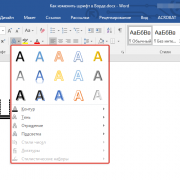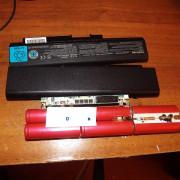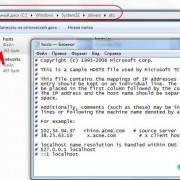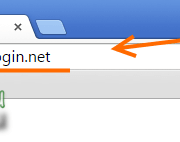Rockchip
Windows
The Windows tool for flashing the image is provided by Rockchip. To flash the update.img, you need to use the RKBatchTool and to flash the partitions, you will need to use RKDevelopTool. Both RKBatchTool and RKDevelopTool rely on the RK USB driver so you will need to install it first as below:
Install driver
There two ways to install the driver under Windows:
- install using RKDriverAssistant tools — the easy way
- install manually
If you have already installed the USB driver please skip this step.
Install using RK Driver Assistant tools
Then click “Install Driver”, and depending on your version of Windows the Security below may show up twice during installation. Just click “Install”
when the driver has finish installing then shut down MarsBoard and connect the MarsBoard to your computer and let the board go to recovery mode, then your computer will detect the board and you will see it within device manager.
Now the driver should have been installed successfully!
Install Manually
Select the Unknown device then right click and select «Update Driver Software».
Select «Browse the computer for driver software».
Find the file unzipped file you downloaded earlier (Rockusb_Driver_v3.7.rar) and select either the 32/64bit folder then click «OK» to install.
When the driver is installed successful you will then see a Rockusb Device in the device manager window.
Now the driver is installed successfully.
Flash Image
There are two methods to flash an image use android tools.
- use Download Image (can flash by partitions)
- use upgrading firmware (flash update.img only, it will erase everything.)
Using AndroidTool to flash update.img (Firmware)
Select an image (RK3066 update.img), click Firmware. For information on how to make an update.img see update.img
Power down the MarsBoard and connect the MarsBoard to the computer then let the board go to recovery mode after the program should detect the device.
Click the «Upgrade» button to begin flashing and when the flashing process finishes successfully you will see the following interface.
If the flashing has aborted ,it could possibly be an error with the update.img, you can either try to redo the operations above or make the update.img again!
Using AndroidTool to falsh image by partition
Power down the MarsBoard and connect the MarsBoard to the computer and let the board go to recovery mode then the program will detect it.
There are eight selections to choose from so select the correct row and then select the checkbox to the left of the row to select it. After you must click the column on the right side for the path of the file you want to flash. You can then select one or more files and flash them at once. Finally Click «Run» to flash images to the device (the right most selection shows the log of the progress).
If successful the board will disconnect from the tool and boot into the system.
Please Note:
- The kernel is contained within the boot.img when you package the image by «./mkimage.sh ota» please see Android Build for more information.
- you can flash one of more image at one time as needed
This happens at upgrading bootloader, if you need to upgrade the bootloader or the update.img contains a new bootloader, you probably will meet this. The marsboard is «bricked». Follow this unbrick instructions to unbrick it.
Linux
Rockchip has provided tools for upgrading within Linux (closed source) since Android 4.4. The initial RE work of the Rockchip bootloader updating protocol is by naobsd and has been improved by some in rkflashtool. linuxerwang has made a GUI version of the rkflashtool called rkflashkit.
Warning: both rkflashtool and rkflashkit can not flash the update.img.
Using Linux Upgrade Tool to flash update.img
Flash update.img
Let the board go to recovery mode and run the following command to flash the update.img:
sudo ./upgrade_tool uf /path/update.img #(UF Upgrade Flash)
Lowlevel Format nand
If you have an error with upgrading you can low level format the nand flash first with the following command:
sudo ./upgrade_tool lf #(LF Lowlevel Format) This will erase everything on nand
Others
There are other commands in the upgrade_tool, such as:
UL: upgrade the loader EF: erease the nand flash
And install it with the following command
sudo apt-get install python-gtk2 sudo dpkg -i rkflashkit_0.1.1_all.deb
Flashing firmware with RkFlashKit
Run it with the following command
sudo rkflashkit
The tool is similar to RkAndroidTool as it can burn partition images to specific partitions. You’ll need to enter recovery mode just like you would do in Windows, by pressing the recovery button, before powering the device via the USB port, and connect the USB cable to your PC. RkFlashKit should automatically find your device, so you just have to select the correct NAND partition, select the image file to flash, and click on Flash image.
- Click the Nand partition and you will see the partitions of the board listed then choose the one you want to flash.
- Choose the location of the image you want to flash to that partition.
- Click the «Flash image» button and it will start flashing
- After it’s finished click «Reboot Device» button to reboot the board.
Flash RKBatchTool Firmware File with RkFlashKit
the firmware updates are often distributed using RKBatchTool file format, which can not be directly handled by RkFlashKit. Luckily, there are some other tools available to extract the partitions file from such firmware.
You’ll first need to build rk-tools:
Then use img_unpack tools to unpack the firmware to another format:
./img_unpack update_mk908_106j2107_04.img update_mk908_106j2107_04_unpack.img rom header code: 1060000 rom version: 4.1.1 build time: 2013-09-07 10:39:22 chip: 70 checking md5sum....OK
Finally, run afptool to extract the files from the resulting file into “firmware” directory:
./afptool -unpack update_mk908_106j2107_04_unpack.img firmware
Check file…OK
package-file 0x00000800 0x00000242 RK3188Loader(L)_V1.20.bin 0x00001000 0x0002F8AE parameter 0x00031000 0x00000264 Image/misc.img 0x00031800 0x0000C000 Image/boot.img 0x0003D800 0x00A2C000 Image/recovery.img 0x00A69800 0x00BFC000 Image/system.img 0x01665800 0x1A630000 backupimage/backup.img 0x1BC95800 0x01665004 update-script 0x1D2FB000 0x000003A5 recover-script 0x1D2FB800 0x0000010A UnPack OK!
Now that we’ve got our partition files, simply use RkFlashKit as mentioned above.
Please enable JavaScript to view the comments powered by Disqus.
blog comments powered by Disqus
Markets and competition
In the market for SoC solutions for tablets, Rockchip faces competition from Allwinner Technology,MediaTek,Intel,Actions Semiconductor,Spreadtrum,Leadcore Technology,Samsung Semiconductor, Qualcomm, Broadcom, VIA Technologies and Amlogic.
After establishing a leading position early in the developing Chinese tablet SoC market, in 2012 it faced a challenge by Allwinner. In 2012, Rockchip shipped 10.5 million tablet processors, compared to 27.5 million for Allwinner.
However, Rockchip subsequently improved its competitive position. For Q3 2013, Rockchip was forecast to ship 6 million tablet-use application processors in China, compared to 7 million for Allwinner who mainly shipped single-core solutions.
Rockchip was reported to be the number one supplier of tablet-use application processors in China in Q4 2013, Q1 2014 and Q2 2014.
Chinese SoC suppliers that do not have cellular baseband technology are at a disadvantage compared to companies such as MediaTek that also supply the smartphone market as white-box tablet makers increasingly add phone or cellular data functionality to their products.
Intel Corporation has made significant investments into becoming a player in the tablet processor market and was heavily subsidizing its entry into the low-cost tablet market as of 2014.
Cooperation with Intel
In May 2014, Intel announced a strategic agreement with Rockchip to jointly deliver an Intel-branded mobile SoC platform based on Intel’s Atom processor and 3G modem technology. Under the terms of the agreement, the two companies will deliver an Intel-branded mobile SoC platform. The quad-core platform will be based on an Intel Atom processor core integrated with Intel’s 3G modem technology, and is expected to be available in the first half of 2015. Both Intel and Rockchip will sell the new part to OEMs and ODMs, primarily into each company’s existing customer base.
As of October 2014, Rockchip was already offering a low-end smartphone solution, Intel’s XMM 6321, through its customer base. It is a two chip solution consisting of a dual-core application processor (either with Intel processor cores or ARM Cortex-A5 cores) with integrated modem (XG632) and an integrated RF chip (AG620) that originates from the cellular chip division of Infineon (which Intel acquired some time ago). The application processor may also originate from Infineon or Intel. Rockchip has not earlier targeted the smartphone space in a material way.
Markets and competition
In the market for SoCs for tablets, Rockchip faces competition with Allwinner Technology,MediaTek,Intel,Actions Semiconductor,Spreadtrum,Leadcore Technology,Samsung Semiconductor, Qualcomm, Broadcom, VIA Technologies and Amlogic.
After establishing a position early in the developing Chinese tablet SoC market, in 2012 it faced a challenge by Allwinner. In 2012, Rockchip shipped 10.5 million tablet processors, compared to 27.5 million for Allwinner.
However, for Q3 2013, Rockchip was forecast to ship 6 million tablet-use application processors in China, compared to 7 million for Allwinner who mainly shipped single-core products.
Rockchip was reported to be the number one supplier of tablet-use application processors in China in Q4 2013, Q1 2014 and Q2 2014.
Chinese SoC suppliers that do not have cellular baseband technology are at a disadvantage compared to companies such as MediaTek that also supply the smartphone market as white-box tablet makers increasingly add phone or cellular data functionality to their products.
Intel Corporation made investments into the tablet processor market, and was heavily subsidizing its entry into the low-cost tablet market as of 2014.
Cooperation with Intel
In May 2014, Intel announced an agreement with Rockchip to jointly deliver an Intel-branded mobile SoC platform based on Intel’s Atom processor and 3G modem technology. Under the terms of the agreement, the two companies will deliver an Intel-branded mobile SoC platform. The quad-core platform will be based on an Intel Atom processor core integrated with Intel’s 3G modem technology, and is expected to be available in the first half of 2015. Both Intel and Rockchip will sell the new part to OEMs and ODMs, primarily into each company’s existing customer base.
As of October 2014, Rockchip was already offering Intel’s XMM 6321, for low-end smartphones. It has two chips: a dual-core application processor (either with Intel processor cores or ARM Cortex-A5 cores) with integrated modem (XG632) and an integrated RF chip (AG620) that originates from the cellular chip division of Infineon Technologies (which Intel acquired some time ago). The application processor may also originate from Infineon or Intel. Rockchip has not earlier targeted the smartphone space in a material way.










